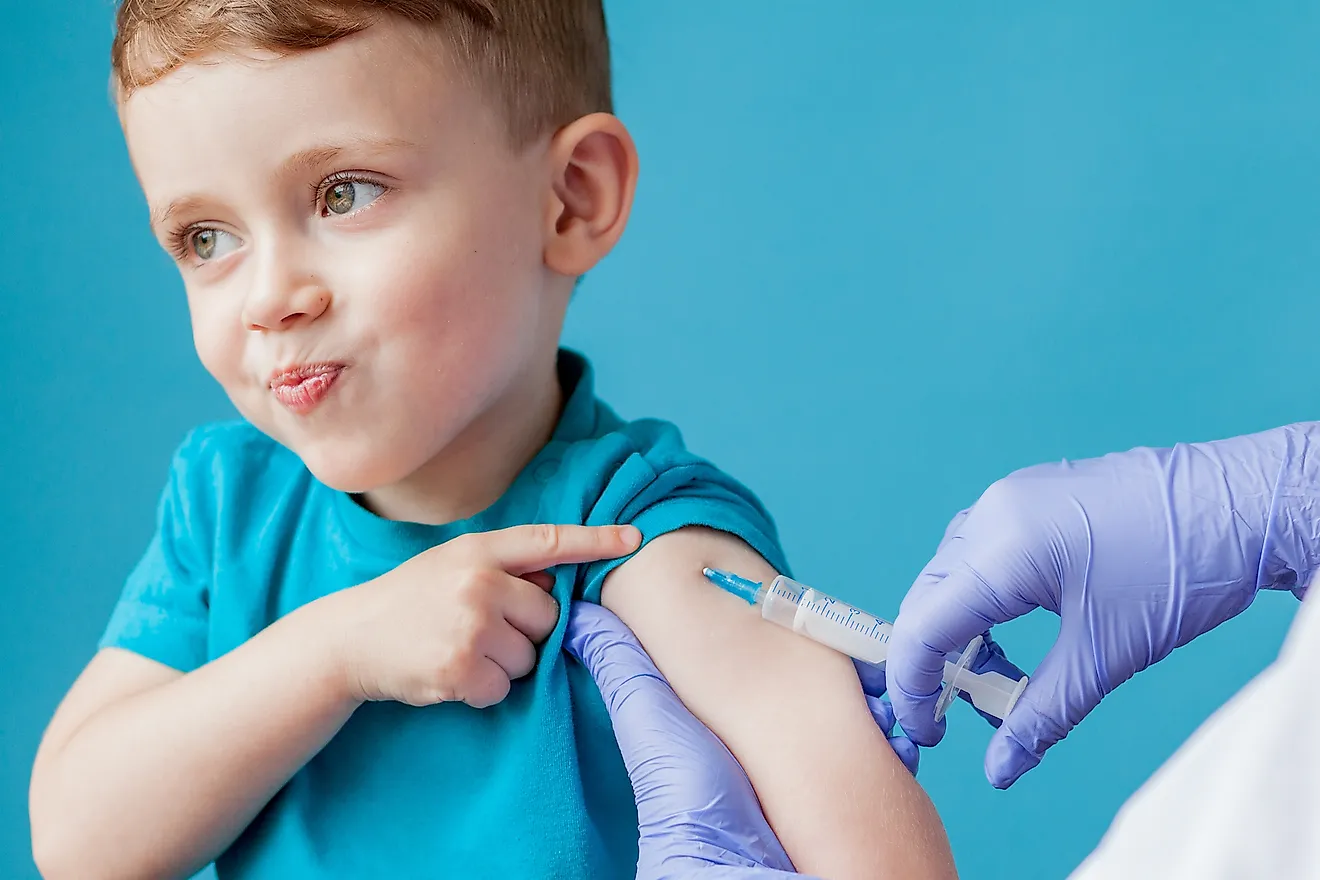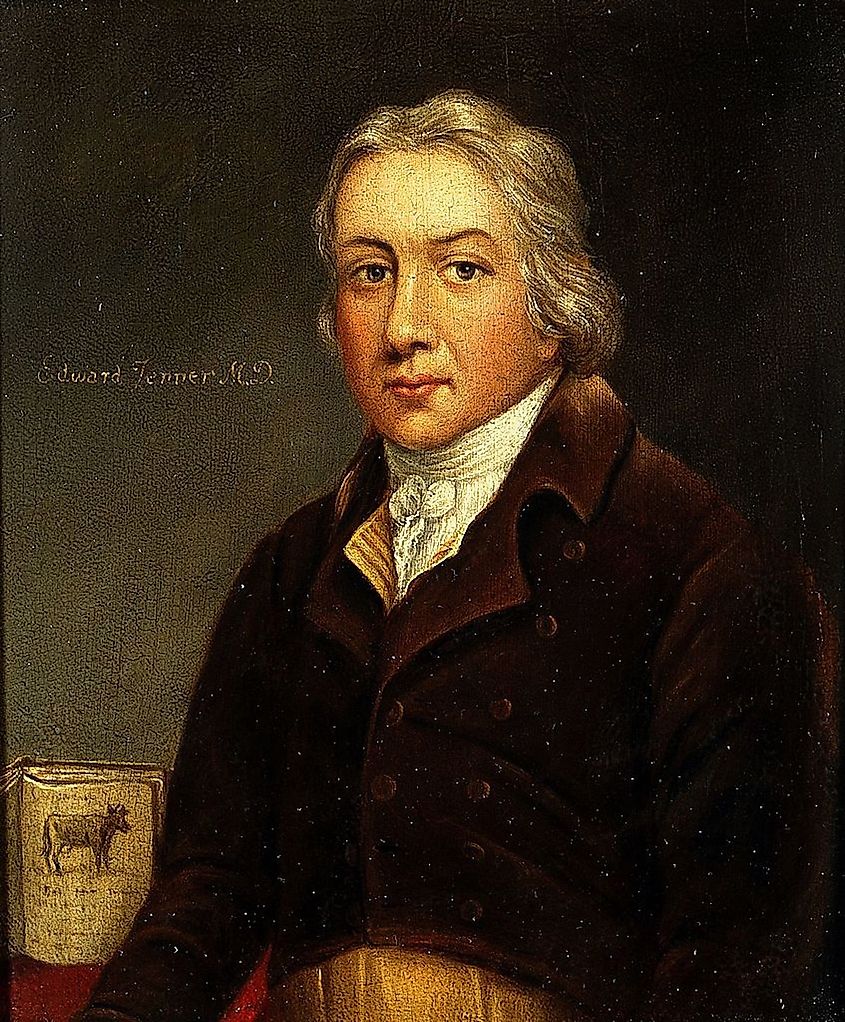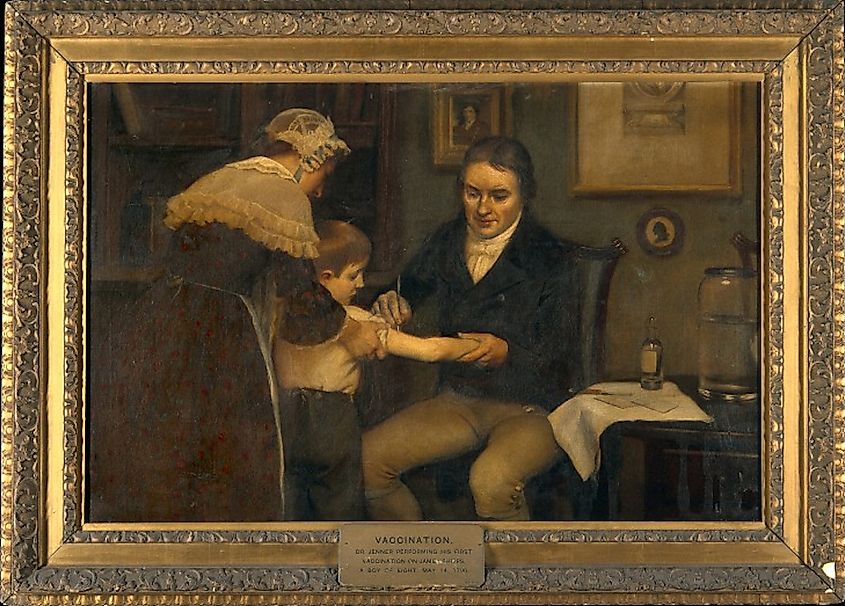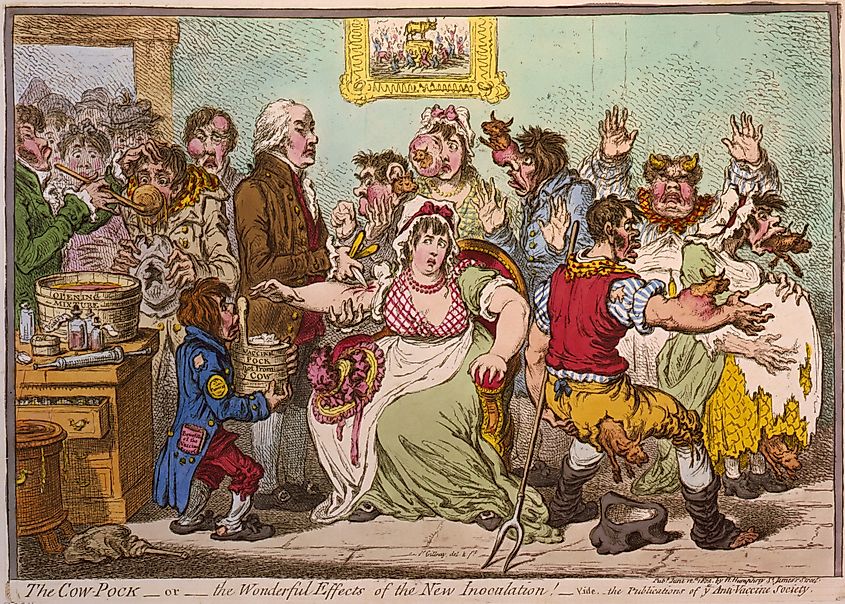
- Smallpox is caused by the Variola virus, which dates back to prehistoric times
- other diseases traveled around the world before effective vaccines were created.
- Edward Jenner was born in Berkeley, Gloucestershire, England, in 1749.
- the World Health Assembly announced that smallpox had been eradicated from the world.
Smallpox is caused by the Variola virus, which dates back to prehistoric times. The earliest evidence of smallpox-like skin lesions was found on Egyptian mummies from 1570 to 1085 BC. Other indications of the disease were found in ancient Asian cultures, from around 1122 BC. It was later found in Europe, the West Indies, Africa, and the New World.
Early Inoculations
There are historic records from India and China that describe early smallpox treatments. The people used a method that began with grinding up smallpox scabs. This ground up matter was then blown into healthy people’s nostrils. Another technique was to scratch a smallpox sore, and then scratch it into a healthy person’s skin. Called “variolation,” it was also practiced in Turkey, Africa, the Americas, and Europe. In Turkey, practitioners would expose people to a less serious form of smallpox by making incisions into healthy people’s skin. They would then inoculate it with pus from smallpox sores. Some researchers believe these practices were employed as far back as 200 BCE.
Aside from smallpox, other diseases traveled around the world before effective vaccines were created. These include whooping cough, yellow fever, typhoid, and measles. Different treatments were attempted, but none showed success until the late 18th century.
Edward Jenner

Edward Jenner was born in Berkeley, Gloucestershire, England, in 1749. With a strong interest in science, he was apprenticed to an area doctor when he was just 13. At age 21, Jenner moved to London to continue his studies at St. George’s Hospital with John Hunter, a famous surgeon and experimental scientist.
Jenner carried out many experiments on human blood, and was later elected a fellow of the Royal Society. Then in 1773, he returned to Berkeley to become a practicing doctor.
Cowpox And Smallpox

Jenner was familiar with cowpox, an uncommon and mild infection seen in cattle. Cowpox can spread to humans who are in contact with sores seen on cows. Jenner observed that local dairy workers would get pustules on their hands, and the infection could spread to other parts of their bodies. He hypothesized that being infected with cowpox could protect people from more serious smallpox infections. On May 14, 1796, Jenner collected matter from a cowpox sore located on a milkmaid’s hand. He then inoculated an eight-year old boy, James Phipps, with the matter. Phipps felt somewhat ill for a few days, and recovered fully. Though Jenner did not know it, the cow pox virus is part of the same virus family as smallpox, which is called Orthopox.

Jenner asserted that “cow-pox protects the human constitution from the infection of smallpox.” His work created the main foundation for modern vaccinology. Jenner gained accolades for his accomplishment, with honors from Harvard, Cambridge, and Oxford Universities.
In May of 1980, the World Health Assembly announced that smallpox had been eradicated from the world. They then recommended that all countries stop vaccinating for the disease. “The world and all its people have won freedom from smallpox,” they stated. According to the CDC, the vaccine is no longer needed. Should things change, the U.S. government has stockpiled smallpox vaccine in case an outbreak ever occurs.



 Users Today : 12
Users Today : 12 Total views : 664984
Total views : 664984